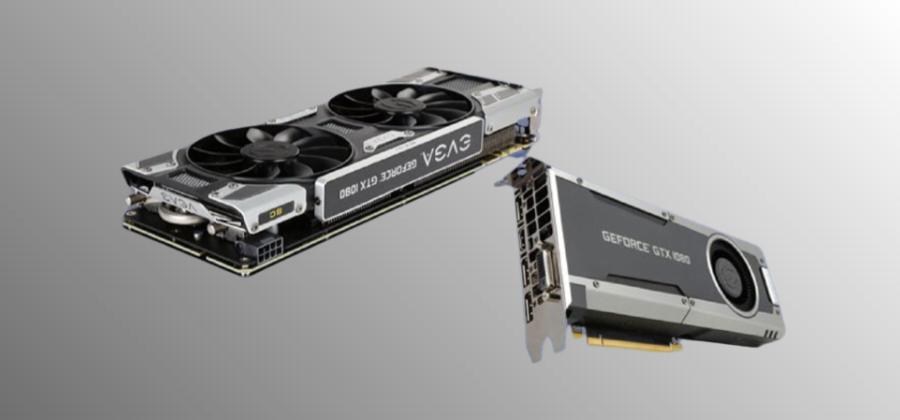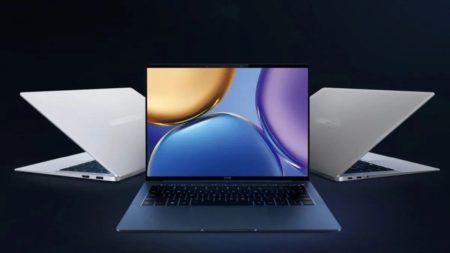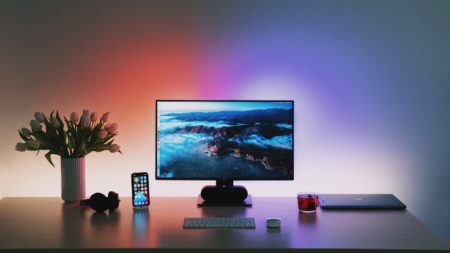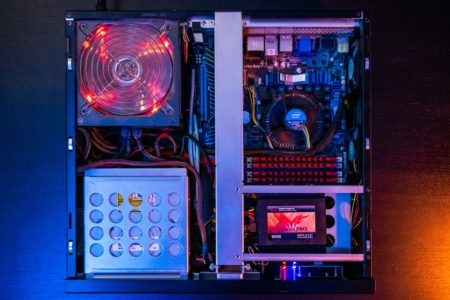Laptops are incredibly convenient and portable to stay connected and get work done on the go. However, your laptop’s graphics card isn’t up to the task if you’re a gamer, graphic designer, or someone who uses intensive software. The good news is that you can upgrade your laptop’s graphics card to improve its performance and handle more demanding applications. This article will provide a step-by-step guide on how to upgrade your laptop graphics card, from determining compatibility to installing and testing the new graphics card. We’ll also provide the following:
- Tips on choosing the right graphics card for your needs.
- Preparing your laptop for the upgrade.
- Updating drivers to ensure everything works smoothly.
By the end of this article, you’ll have all the knowledge and tools you need to upgrade your laptop’s graphics card and take your computing experience to the next level. So let’s get started!
Determine the Compatibility of the Graphics Card
Before shopping for a new graphics card, you must determine whether your laptop allows an upgrade and what type of graphics card is compatible with your system. Here’s what you need to do:
- Check if the laptop allows the graphics card to be upgraded: Not all laptops allow users to upgrade their graphics cards. You’ll need to check your laptop’s documentation or contact the manufacturer to see if upgrading the graphics card is possible. Sometimes, the graphics card may be soldered to the motherboard, making it impossible to replace.
- Check if the new graphics card is compatible with the laptop: Assuming your computer allows for a graphics card upgrade, you’ll need to ensure the new graphics card is compatible. Check your laptop’s documentation or contact the manufacturer to see what type of graphics card your laptop supports.
- Look for the required power and cooling requirements: Upgrading to a more powerful graphics card may require more power and cooling than your current setup can provide. Check the specifications of the new graphics card to see what kind of power supply and cooling system it requires. If your laptop doesn’t have the necessary power and cooling capabilities, you may also need to upgrade those components.
By taking these steps, you can ensure that your new graphics card will be compatible with your laptop and provide the performance boost you’re looking for. It’s important to note that upgrading the graphics card may void your laptop’s warranty, so ensure you understand the risks before proceeding.
Choosing a New Graphics Card
Once you’ve determined the compatibility of your laptop for a graphics card upgrade, it’s time to choose a new graphics card that meets your needs. Here are some things to consider when choosing a new graphics card:
- Research different compatible graphics cards: Many kinds of graphics cards are available on the market, each with its own specifications and features. Research and compare other models to see which fits your needs and budget. Look for reviews and benchmarks to see how the graphics card performs in real-world applications.
- Determine the laptop user’s needs: Consider your laptop’s intended use when choosing a graphics card. If you’re a gamer, you’ll want a graphics card that can easily handle the latest games. If you’re a graphic designer or video editor, you’ll want a graphics card that can render and process large files. Make sure the graphics card you choose is appropriate for your intended use.
- Compare the specifications of different graphics cards: Look at the specifications of other graphics cards to see how they compare. Pay attention to the number of CUDA cores, clock speed, memory bandwidth, and memory type. The higher the specifications, the more influential the graphics card will be.
You can choose a graphics card to provide the performance boost you need by taking these steps. It’s important to note that some laptops may have limited upgrade options, so research your laptop’s capabilities before purchasing.
Prepare the Laptop for Installation
Before installing the new graphics card, you’ll need to prepare your laptop to ensure the installation goes smoothly. Here are some steps to follow:
- Back up essential data: Before you make any changes to your laptop’s hardware, back up any critical data to an external hard drive or cloud storage. It will ensure that you keep all essential files if something goes wrong during installation.
- Uninstall old graphics card drivers: It’s essential to uninstall the old graphics card drivers before installing the new graphics card. It will prevent conflicts between the old and new drivers and ensure your laptop runs smoothly with the new graphics card.
- Clean the laptop’s interior: Over time, dust and debris can accumulate inside your computer, which can cause overheating and other performance issues. Before installing the new graphics card, use compressed air to clean out any dust or debris inside your laptop.
- Remove the old graphics card: Once you’ve backed up your data, uninstalled the old drivers, and cleaned your laptop’s interior, it’s time to remove the old graphics card. Carefully follow the manufacturer’s instructions for clearing the old graphics card, and make sure to ground yourself to prevent static discharge that can damage your new graphics card.
Following these steps, you can prepare your laptop to install the new graphics card, ensuring the process goes smoothly, and your computer runs optimally with the new hardware.
Installing the New Graphics Card
Once you’ve prepared your laptop to install the new graphics card, it’s time to install the new hardware. Here are the steps to follow:
- Insert the new graphics card: Carefully insert the new graphics card into the slot where the old graphics card was located. Make sure the card is seated correctly and secured in place. Note that the process for inserting the new graphics card may vary depending on the laptop model and graphics card.
- Install new graphics card drivers: Once the new graphics card is installed, you’ll need to install the new drivers. You can find the latest drivers on the manufacturer’s website. Download and install the appropriate drivers for your operating system and graphics card.
- Test the new graphics card: Once the drivers are installed, it’s time to test the new graphics card. Run benchmark tests and try out graphics-intensive applications to see if the new graphics card is performing as expected. Make sure that the laptop is running smoothly with the new hardware.
- Adjust settings as needed: Depending on your needs, you may need to adjust some settings to optimize the performance of your new graphics card. For example, you may need to change the resolution or refresh rate to improve the display quality, or you may need to adjust the fan speed to prevent overheating.
Following these steps, you can successfully install the new graphics card on your laptop and enjoy improved performance for graphics-intensive applications. Follow the manufacturer’s instructions for installing the new graphics card and avoid a static discharge that can damage your new hardware.
Update Drivers
After you’ve installed the new graphics card, it’s essential to update the drivers to ensure optimal performance. Here are the steps to follow:
- Identify the make and model of your new graphics card: To update the drivers for your new graphics card, you need to know the make and model of the card. You can find this information on the manufacturer’s website or the box in which the card came.
- Download the latest drivers: Once you have the make and model of the graphics card, visit the manufacturer’s website to download the latest drivers for your operating system. Make sure to select the correct version of the driver for your specific graphics card model and operating system.
- Uninstall the old drivers: Before installing the new drivers, it’s essential to uninstall the old drivers to prevent conflicts between the old and new drivers. To uninstall the old drivers, go to the Device Manager in Windows, right-click on the old graphics card, and select “Uninstall.”
- Install the new drivers: Once the old drivers are uninstalled, you can install the latest ones you downloaded in Step 2. Follow the installation instructions carefully, and restart your computer after installation.
- Test the new drivers: After installing the latest drivers, test the graphics card to ensure it functions correctly. Run benchmark tests and try out graphics-intensive applications to see if the new drivers have improved performance.
By following these steps, you can update the drivers for your new graphics card, ensuring you get the best performance possible from your new hardware. Make sure to download the latest drivers from the manufacturer’s website and uninstall the old drivers before installing the new ones.
Conclusion:
Upgrading your laptop’s graphics card can improve your device’s performance and graphics capabilities, allowing you to run more demanding applications and games. However, choosing the right graphics card is essential, ensuring compatibility and following the installation and driver update process carefully. Here are the key takeaways:
- Determine the graphics card’s compatibility with your laptop’s specifications before purchasing a new graphics card.
- Choose a graphics card that fits your needs and budget, considering your laptop’s performance and power requirements.
- Prepare your laptop for installation by backing up critical data and disabling any security software.
- Follow the installation process carefully, and make sure to ground yourself and avoid static electricity when handling the components.
- Update the drivers to ensure optimal performance and stability of your new graphics card.
- Test the new graphics card by running benchmark tests, graphics-intensive applications, and monitoring the temperatures of your laptop.
By following these steps, you can successfully upgrade your laptop’s graphics card and enjoy improved performance and graphics capabilities. However, if you’re uncomfortable handling the installation process or have any doubts, it’s best to seek assistance from a professional. Your laptop can become a powerful gaming and graphics machine with the right graphics card and proper installation.
Frequently Asked Questions
Can I upgrade the graphics card on any laptop?
No, not all laptops are designed to have their graphics card upgraded. Some laptops come with integrated graphics cards that cannot be replaced, while others may have dedicated graphics cards that can be upgraded. It’s essential to check the specifications of your laptop to determine whether it has an upgradeable graphics card.
What factors should I consider when choosing a new graphics card for my laptop?
When choosing a new graphics card, consider compatibility with your laptop’s specifications, performance requirements, power consumption, and budget. Select a graphics card compatible with your laptop’s motherboard and power supply that can handle the demands of your applications and games.
Do I need to update the drivers for my new graphics card after installation?
Yes, updating the drivers for your new graphics card is crucial to ensure optimal performance and stability. It’s recommended to download the latest drivers from the manufacturer’s website and follow the installation process carefully.
Is it necessary to test the new graphics card after installation?
Yes, trying the new graphics card after installation is essential to ensure it’s working correctly and delivering the expected performance. Running benchmark tests, graphics-intensive applications, and monitoring the temperatures of your laptop can help you determine if the new graphics card is working as expected. If you notice any issues, refer to the manufacturer’s website for troubleshooting tips or seek assistance from a professional.









